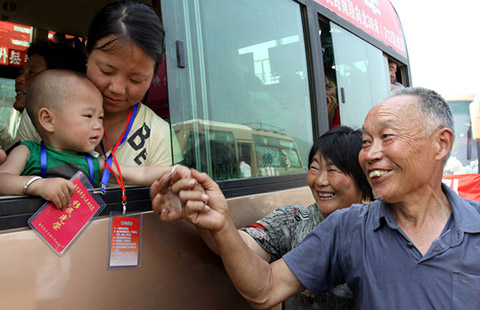US presence shows strong China ties
Updated: 2014-11-08 10:26
By Li Wenfang(China Daily)
|
||||||||
The attendance of high-ranking US government officials and executives of multinational businesses at the APEC summit is a clear indication of the constantly expanding and mutually beneficial relationship between the countries, according to Harley Seyedin, president of the American Chamber of Commerce in South China.
Seyedin said in a recent interview with China Daily that he expects the APEC meeting to produce immediate results in many areas, from easier visa processes for Chinese and US citizens to the opening of additional areas for investment.
"We also see future results through better understanding between China and the US and an accelerated process for a bilateral investment treaty," he said.
|
 |
|
Harley Seyedin, president of the American Chamber of Commerce in South China. |
Earlier this week, leading US and Chinese business organizations expressed strong support for completing a high-standard bilateral investment treaty, with all US chambers of commerce in China calling for the work on the treaty to be finished as soon as possible, he said.
The chambers argue that huge potential for bilateral investment exists, which promises to be a defining feature of the commercial relationship in the future. The bilateral investment treaty would provide a better framework to guide the development of a healthy and mutually beneficial investment relationship, he said.
A report released last month by Boston Consulting Group said major US manufacturers are increasingly moving production back to the US from China.
Rising labor costs in China, skilled labor in the US, shorter supply chains with reduced shipping costs for the US market, local control over manufacturing processes and improved quality and yield in the US are cited as reasons for such moves.
Seyedin said: "As you see from the transformation of our companies from manufacturing for exports to producing in China for China, it now makes financial sense for our companies to move simple labor and energy intensive manufacturing to other regions, including the US.
"This move is at the same time as they focus their efforts on innovation and value-added production for the Chinese market. It does not mean our companies are moving out of China, just that they are focusing on transformation to better serve the highly valuable Chinese market.
"China has now reached a point where it no longer needs to be the factory of the world for low-end energy and labor intensive products."
Members of Seyedin's chamber continue to report growth and profitability and an increasing desire for reinvestment in China to expand and to capture additional market share, primarily focused on producing goods and services for the Chinese market.
In the annual survey report released by the chamber in February, 72.9 percent of member companies focused on the Chinese market and not manufacturing in China for exports. In 2003, the number was less than 23 percent.
The chamber is conducting its annual survey, and early results indicate US companies will increase their investments in China substantially once the bilateral investment treaty is in place.
"This is significant when one considers that the more than 2,300 members of AmCham South China account for nearly 40 percent of all US-China business, trade and investment."
|
 |
 |
| Night scene of Beijing in APEC Week | Chinese companies pitch in for APEC |
Most Viewed
Editor's Picks

|

|

|

|

|

|
Today's Top News
Sultan of Brunei acquires NYC's Plaza Hotel
Beijing backs global multilateral trading system
China to overtake the West on energy consumption
Apple hits back at malware in China
Mexico cancels bullet train deal
China, Japan reach four-point agreement on ties
China's wealthy look to make 'social impact' on education
Airline exec sees bright side for China and US
US Weekly

|

|
















